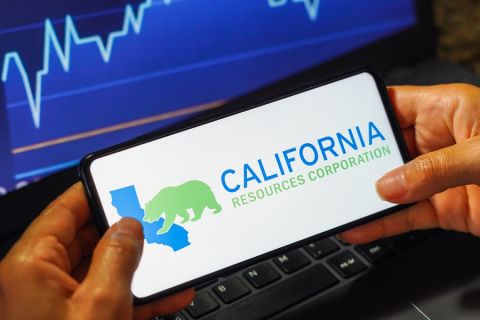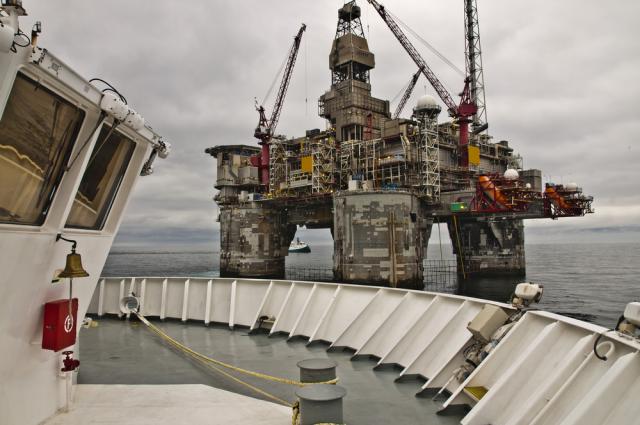
Exploration and production in the North Sea. (Source: Shutterstock)
The Norwegian Ministry of Petroleum and Energy (MPE) paved the way for 19 oil and gas projects on the Norwegian Continental Shelf (NCS) to move forward.
On June 28, the ministry announced approval of the projects, which call for $18.5 billion in total investments for new developments, further development of existing fields and projects to increase extraction at existing fields.
Approval of the projects ensures Norway will have new production in the latter part of the 2020s to support continued oil and gas exports from the country, Oil and Energy Minister Terje Aasland said in a news release.
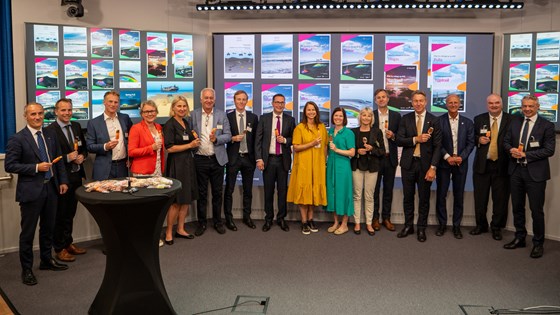
North Sea projects include:
- Aker BP’s Yggdrasil development targeted at recovering 650 MMboe of resources from the Fulla, Munin and Hugin fields;
- Aker BP’s Valhall PWP and Fenris projects targeting an estimated recoverable resources of 367 MMboe from the Valhall and Fenris fields; and
- Aker BP’s Symra Field, which will connect to the Ivar Aasen platform and target recovering 48 MMboe.
Norwegian Sea projects include:
- Aker BP’s Skarv Satellites project tying the Alve Nord, Idun Nord and Ørn fields back to Skarv, targeting about 120 MMboe of recoverable resources;
- Aker BP’s Solveig Phase 2 project;
- Equinor’s Irpa Field subsea tieback to the Aasta Hansteen platform targeting 125 MMboe of recoverable resources;
- Equinor’s Verdande Field subsea tieback to the Norne FPSO, targeting 36 MMboe of recoverable resources;
- OMV’s Berling Field discoveries, which will be tied back to Åsgard B, targeting 44 MMboe of recoverable resources;
- Wintershall Dea’s Dvalin North Field subsea tieback to the Heidrun platform, targeting 84 MMboe of recoverable resources; and
- Wintershall Dea’s further development of its Maria Field targeting additional production of 22 MMboe of recoverables.
Aker BP projects
Aker BP submitted field development plans for a number of operated fields in December. In early June, Norway’s legislature, the Storting, approved the plans.
In all, Aker BP’s projects target recovering more than 700 MMboe net to the company at an average breakeven price of $35/bbl to $40/bbl.
Aker BP said the new developments, along with some other measures to increase efficiency and recovery, will help the company grow its oil and gas production from 400,000 bbl/d in 2022 to 525,000 bbl/d in 2028, according to a press release.
The $10.6 billion development concept for Yggdrasil calls for nine seabed frames; an unmanned production platform in the Munin Field; the Hugin A processing platform with a well area and living quarters in the Hugin Field; and the Hugin B normally unmanned wellhead platform on Frøy, linked to Hugin A.
The entire Yggdrasil area will be remotely operated from an onshore integrated operations center and control room in Stavanger, Norway. Pipeline infrastructure for exporting oil and gas will also be installed. First production is expected in 2027. Aker BP operates the project on behalf of partners Equinor and PGNiG.
Aker BP’s $4.6 billion plan for Valhall PWP and Fenris involves further development of the Valhall area, where an unmanned platform on the Fenris Field will be connected to a new integrated process platform at Valhall. Production is expected in the third quarter of 2027. Aker BP operates the project on behalf of partners Pandion and PGNiG.
Aker BP and its partners will invest about $830 million for the Symra Field tie back to the Ivar Aasen platform, with expected production starting in 2027.
“The fact that we can utilize existing process capacity at Ivar Aasen and Edvard Grieg helps to make the developments economically robust,” Stine Kongshaug McIntosh, Aker BP’s vice president of projects execution for Edvard Grieg and Ivar Aasen, said in a press release.
Aker BP operates Symra Field on behalf of partners Equinor and Sval Energi.
The Solveig Phase 2 development will be connected via existing infrastructure at Solveig to the Edvard Grieg platform. The company plans to start production for Solveig phase 2 in first-quarter 2026. Aker BP operates Solveig on behalf of partners OMV Norge AS and Wintershall Dea AS.
The $1.57 billion Skarv Satellites project will tie back the Alve Nord, Idun Nord and Ørn fields to the Skarv FPSO. Each development features a four-slot template and two wells tied back to the Skarv FPSO, with first production expected in third-quarter 2027.
Aker BP operates Alve Nord on behalf of partners Wintershall DEA and PGNiG. Aker BP operates Idun Nord on behalf of Equinor and Wintershall Dea. Aker BP operates Ørn on behalf of partners Equinor and PGNiG.
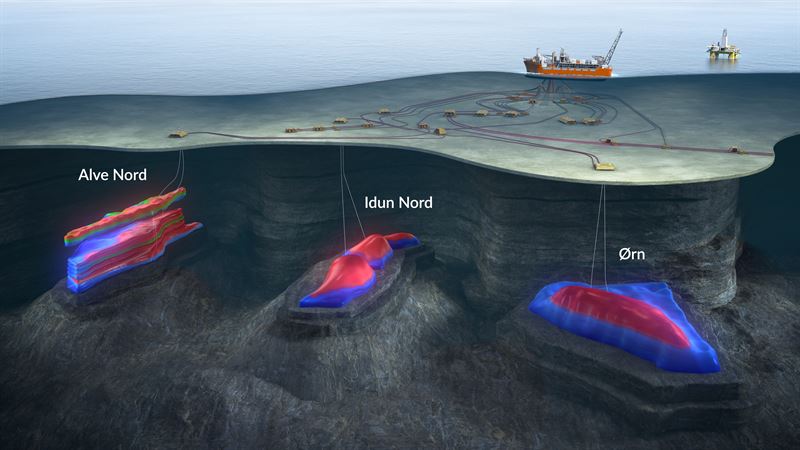
Equinor projects
The Irpa Field, formerly known as Asterix, is in 1,350 m water depth and will be tied back nearly 80 km to Aasta Hansteen, making it the deepest field on the NCS.
The $1.4 billion subsea tieback development will extend the field’s productive life by seven years through to 2039. Production from the 2009 discovery is expected to begin in fourth-quarter 2026.
Equinor operates the field on behalf of partners Wintershall DEA, Petoro and Shell.
The $437 million Verdande subsea development will connect to the FPSO serving Norne, which has been producing since 1997. The project will recover mostly oil from the Cape Vulture discovery of 2017 and the Alve Northeast discovery in 2020. Production is expected to begin in fourth-quarter 2025 and run until 2030.
Equinor operates the field on behalf of partners Petoro, Vår Energi, Aker BP and PGNiG
“By utilizing the Aasta Hansteen and Norne infrastructures, these development projects will quickly bring new production to market with low development costs, while extending the activity on the host platforms,” Trond Bokn, Equinor's senior vice president for project development, said in a press release.
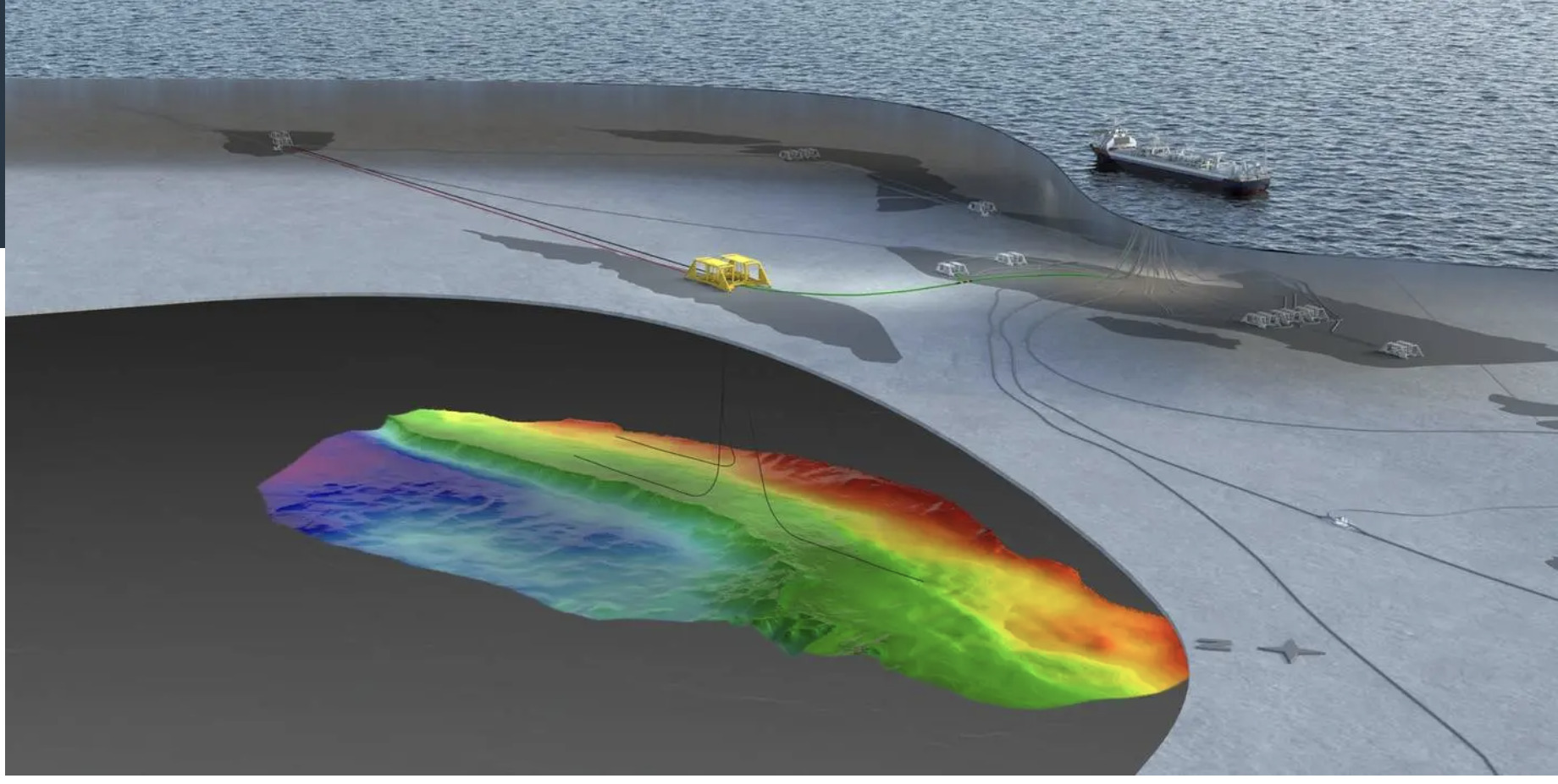
OMV project
OMV’s $835 million Berling Field project will tie two Norwegian Sea discoveries back to Åsgard B platform 23 km away.
OMV said drilling at Berling will start in the third quarter of 2026. Three production wells will be drilled. Production is expected to start in 2028 and last about five years.
OMV operates the project with 30% interest on behalf of Equinor with 40% and DNO with 30%.
Wintershall Dea projects
Dvalin Nord will be developed with a subsea frame connected to the Heidrun platform via the existing Dvalin Field.
Production from the $734 million project is expected to begin in fourth-quarter 2026 and continue for about13 years. Wintershall Dea operates the field on behalf of partners Petoro and Sval.
The Maria Field, in production since 2017, will be further developed in a $315 million project that will make use of existing infrastructure such as water injection from Heidrun and gas lift from Åsgard, as well as production and overall management from the Kristin host platform. Production is expected to begin in second-quarter 2025 and last through 2040. Wintershall Dea operates the field on behalf of partners Petoro and Sval.
Recommended Reading
President: Financial Debt for Mexico's Pemex Totaled $106.8B End of 2023
2024-02-21 - President Andres Manuel Lopez Obrador revealed the debt data in a chart from a presentation on Pemex at a government press conference.
Kimmeridge Fast Forwards on SilverBow with Takeover Bid
2024-03-13 - Investment firm Kimmeridge Energy Management, which first asked for additional SilverBow Resources board seats, has followed up with a buyout offer. A deal would make a nearly 1 Bcfe/d Eagle Ford pureplay.
M4E Lithium Closes Funding for Brazilian Lithium Exploration
2024-03-15 - M4E’s financing package includes an equity investment, a royalty purchase and an option for a strategic offtake agreement.
Laredo Oil Subsidiary, Erehwon Enter Into Drilling Agreement with Texakoma
2024-03-14 - The agreement with Lustre Oil and Erehwon Oil & Gas would allow Texakoma to participate in the development of 7,375 net acres of mineral rights in Valley County, Montana.
California Resources Corp. Nominates Christian Kendall to Board of Directors
2024-03-21 - California Resources Corp. has nominated Christian Kendall, former president and CEO of Denbury, to serve on its board.





